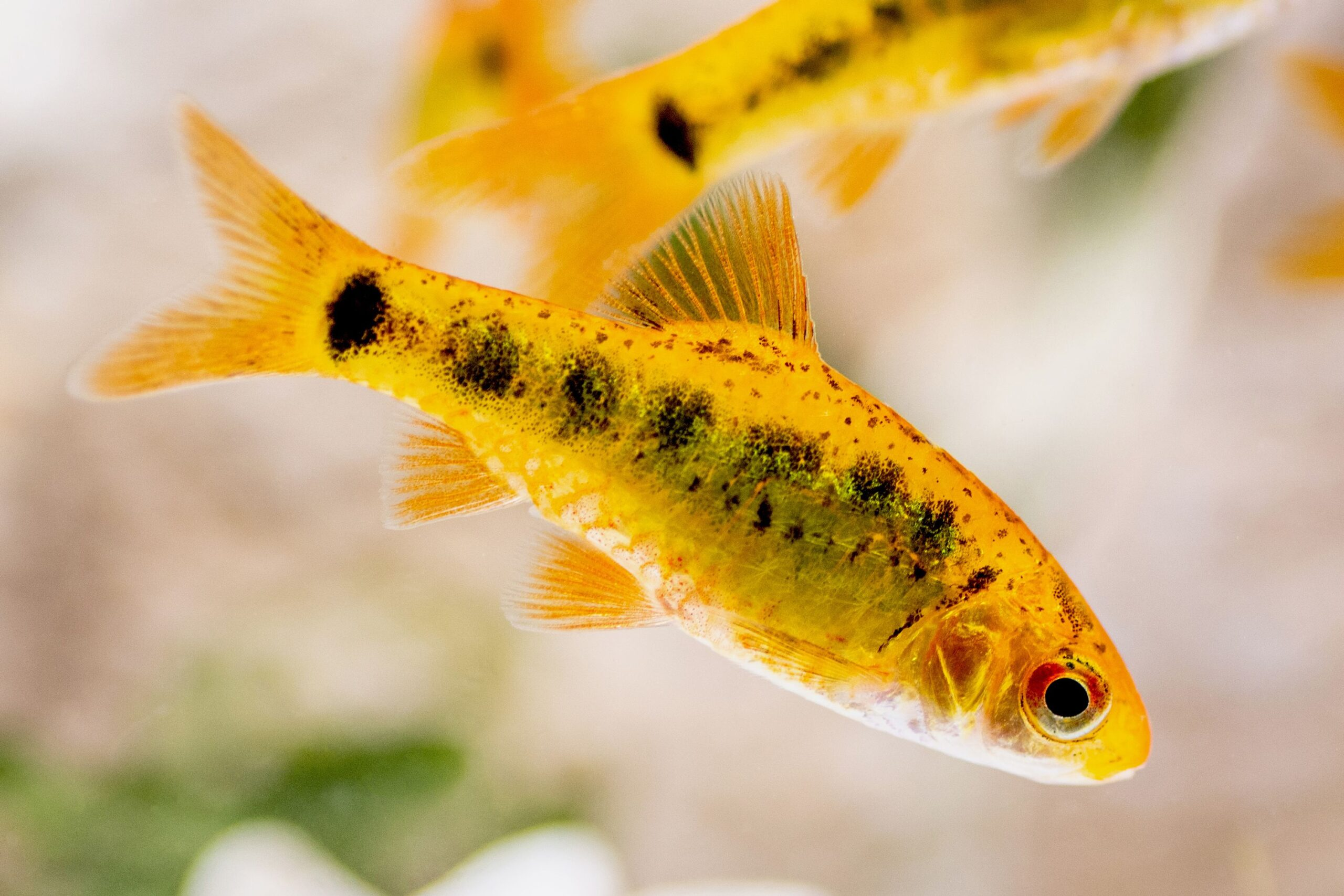Although the original comet goldfish originated from the Crucian Carp in Asia, the fantail goldfish is not found in the wild and has been created through selective breeding by humans. Classified as a variety of “fancy” goldfish, the fantail goldfish was created through breeding fish with desired characteristics together over countless generations.
Colors and Markings
Fantail goldfish are known for their double tails, but also tend to have short bodies and may have elongated pectoral and anal fins. Depending on if your fantail has been bred with other varieties of fancy goldfish, such as orandas, ryukins, or pearlscales, your fantail may take on some characteristics of those other goldfish, such as a small wen (head swelling), tall body, or enlarged coelom. Fantail goldfish are typically orange to white in color but can be red or multicolored if they have been crossed with a shubunkin or ryukin goldfish variety.
Tankmates
As for other goldfish, these options are the best for selecting tankmates for fantail goldfish.
None
Some goldfish just do not get along with others, and that is just fine. Goldfish can be kept individually, but still need a large, filtered aquarium for maintaining their best health. Be sure to spend lots of time with a goldfish housed alone and spoil it like the special only child it is.
Another Goldfish
The best tankmate for a fantail goldfish is another fancy goldfish. It is best to not add another goldfish with a long-body, such as a comet or shubunkin, since they may out-swim your fancy goldfish and get to all the food faster. It is best to choose another fancy goldfish of similar slow swimming ability in order to ensure everyone has a fair share of the food and space.
Zebrafish
When adding fish to a goldfish tank, the most important aspect to consider is the temperate nature of the aquatic environment. Goldfish are kept at lower temperatures than most tropical fish species, making them incompatible. However, a school of zebrafish (zebra danio) is a great addition to a goldfish tank. They like to be in a group, so be sure to have at least five zebrafish. There are many fin varieties and colors of zebrafish to choose from.
Fantail Goldfish Habitat and Care
Like other goldfish varieties, the fantail goldfish is an easy-going, low maintenance fish. However, as with all other goldfish, they are messier than most other pet fish and will require you to stick to your regular maintenance routine. Given their tail shape, fantail goldfish are not the most efficient swimmers, so do not crowd their environment with lots of décor items. You may see them resting more frequently than other goldfish, so having an open area on the substrate will help them rest more comfortably.
Fantail Goldfish Diet and Feeding
There are many pelleted diets available to feed your fantail goldfish. When choosing a pellet, be sure to choose the correct pellet size for your fish to easily swallow. Since they do not have an acidic stomach, goldfish rely on their grinding molars to crush up their food in order to digest it properly. Most goldfish will require about 32-35% protein, but given their swimming difficulties, fancy goldfish should be on a slightly higher protein level in the diet. Choose a diet with a fat content around 4-5% and replace your food container every 6 months to ensure adequate vitamin C levels. Sinking diets are recommended to help with any fish prone to buoyancy disorders, so they don’t gulp air at the surface while eating a floating food.
Feeding frequency will depend on your tank’s temperature. Below 70 degrees Fahrenheit (21 degrees Celsius), you should be feeding your goldfish once a day. At 70 degrees Fahrenheit and above, you should be feeding your goldfish twice a day. Sprinkle just enough food for them to eat leisurely for 5 minutes. If you see any uneaten food after feeding time, you are feeding too much. Remove uneaten food from an aquarium to prevent waste accumulation.




Reviews
There are no reviews yet.